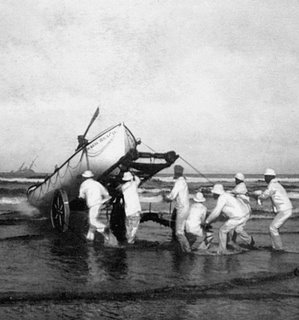Sunday, July 30, 2006

W TO SW WIND 10 TO 15 KT...VEERING TO NW IN THE AFTERNOON.
WIND WAVES 2 FT.
W SWELL 3 FT AT 9 SECONDS.
TONIGHT N WIND 10 TO 15 KT.
WIND WAVES 2 FT.
W SWELL 3 FT AT 9 SECONDS.
Historically, the Oregon coast was a dangerous place for early maritime trade. Strong winds buffeted the shores and headlands, narrow channels and fluctuating bars were the rule at entrances of bays and rivermouths, and headlands and growing towns were remote and isolated. Mariners desperately needed services. The bar of the Columbia gained a reputation and description as the "graveyard of the Pacific." Boats foundered, grounded, and smashed on rocky headlands, taking hundreds of lives. While efforts to chart this rugged coastal wilderness and compile information on its hazards, the U.S. Light-house Board was called upon to provide more assistance.
Congress appropriated funds for design and construction of important facilities on a case by case basis. These included lighthouses: Cape Arago (1866), Cape Blanco (1870), Yaquina Bay (1872), Cape Foulweather (1873), Point Adams (1875), Tillamook Rock (1881), Warrior Rock (1888) at the mouth of the Willamette River, Cape Meares (1890), Umpqua River, Heceta Head, Coquille River (all 1894), and Desdemona Sands (1905). The goal was to create a system of stations with interlocking lights. On a clear night at sea, a mariner might expect to sight at any point a distinctive beacon on shore to pinpoint the location. Fog signals powered by steam engines blasted warnings from a number of the stations to tell captains to drop anchor or beat a retreat until the mists cleared.
In 1892 an appropriation of $60,000 funded construction of Columbia River Lightship No. 50. Anchored off the treacherous bar of the Columbia, the lightship had a lonely crew of eight who, for decades, kept watch, maintained kerosene lights, and fed coal into boilers to power a massive fog signal. Their wave-tossed perch with booming horn drew hardy men who, like those at remote lighthouses, endured modest pay and isolation.
Congress also funded construction of stations and staffing for the U.S. Life-Saving Service. The first station opened in 1878 at the Cape Arago Lighthouse near the entrance to Coos Bay. Numerous shipwrecks and loss of life associated with the export of coal and lumber from the harbor brought federal action. The small building had a surfboat and one oarsman. Launching the craft and rowing to a vessel in distress depended upon volunteers. By the end of the 19th century the U.S. Life-Saving Service had stations at Warrenton, Tillamook Bay, Yaquina Bay, Coos Bay, and the Umpqua and Coquille Rivers. Each had crew quarters, a boat house, and a practice mast for breeches-buoy drill. In the early 20th century the USLSS erected stations at Port Orford and Siuslaw River.
~from the Oregon Blue Book website























0 comments:
Post a Comment